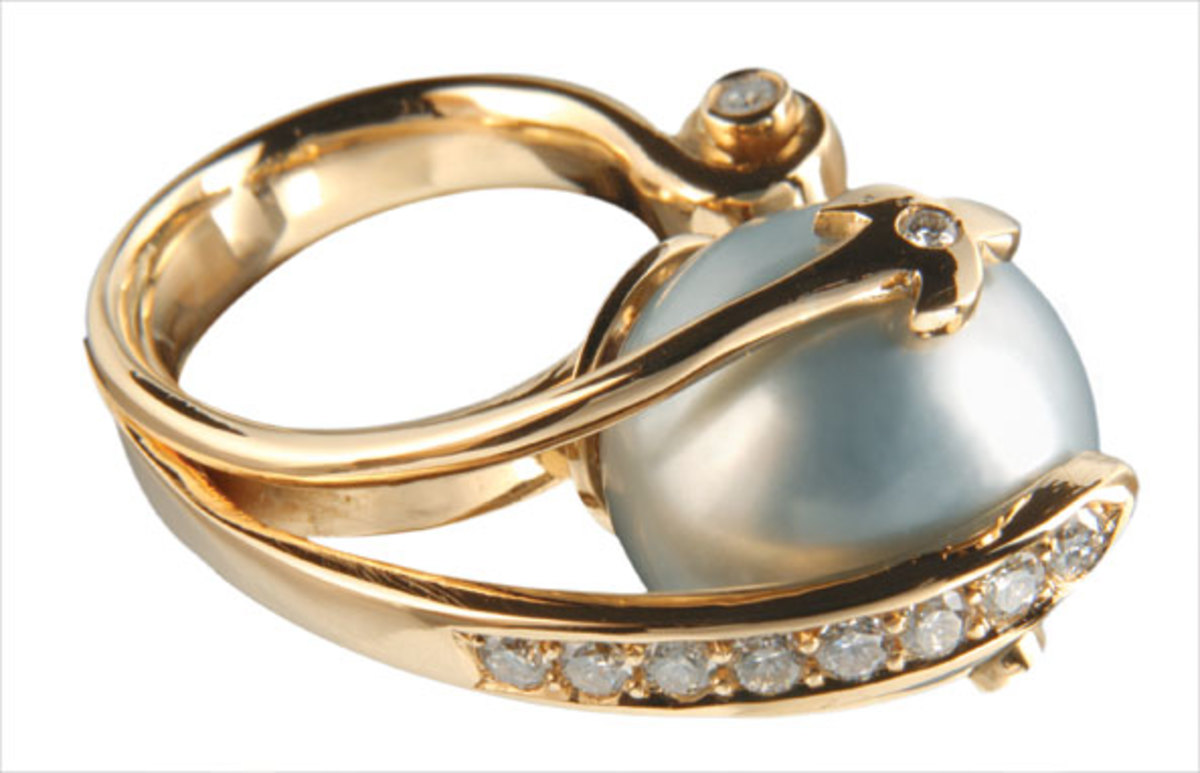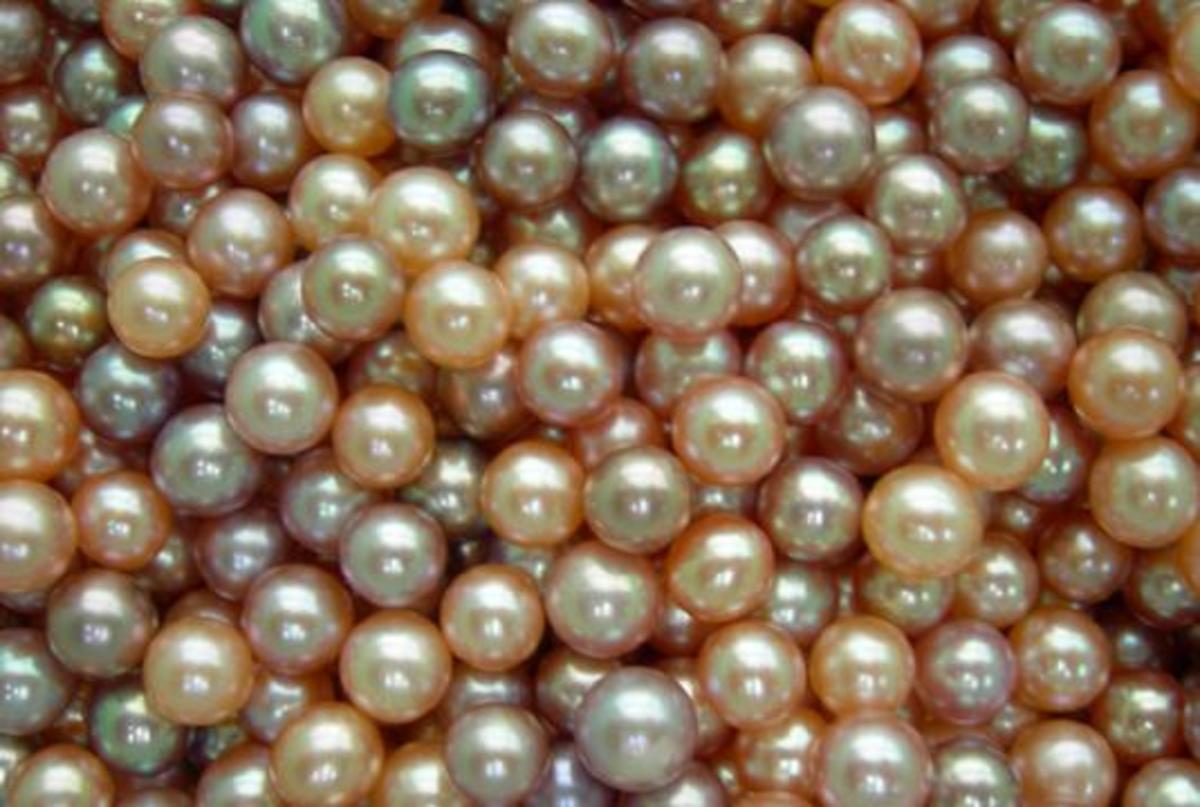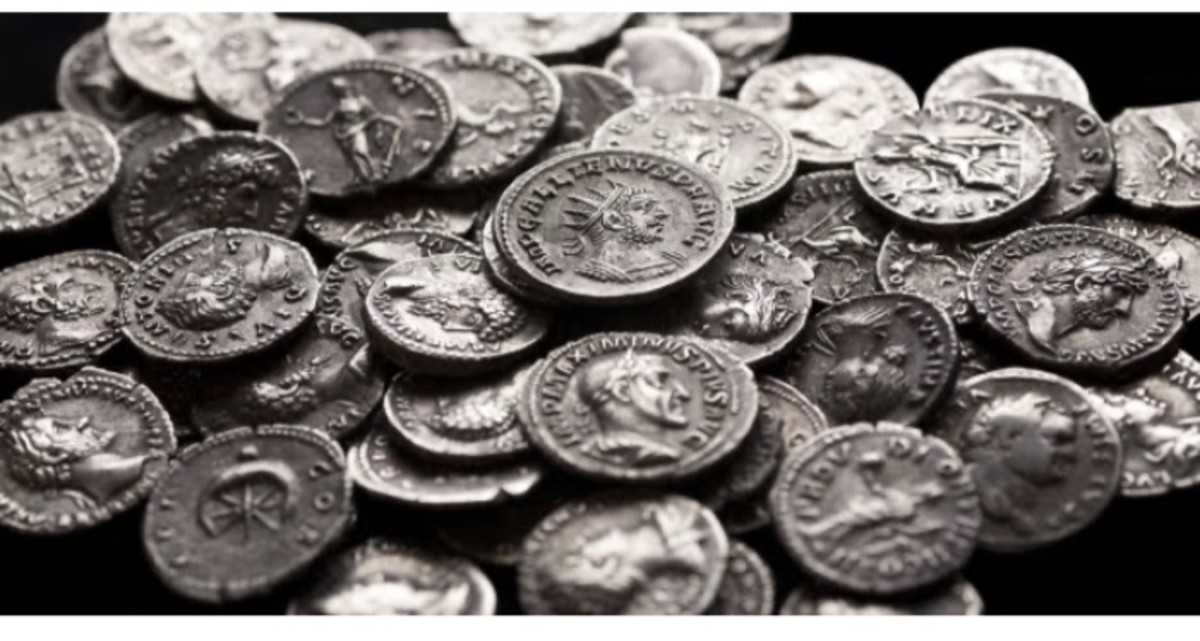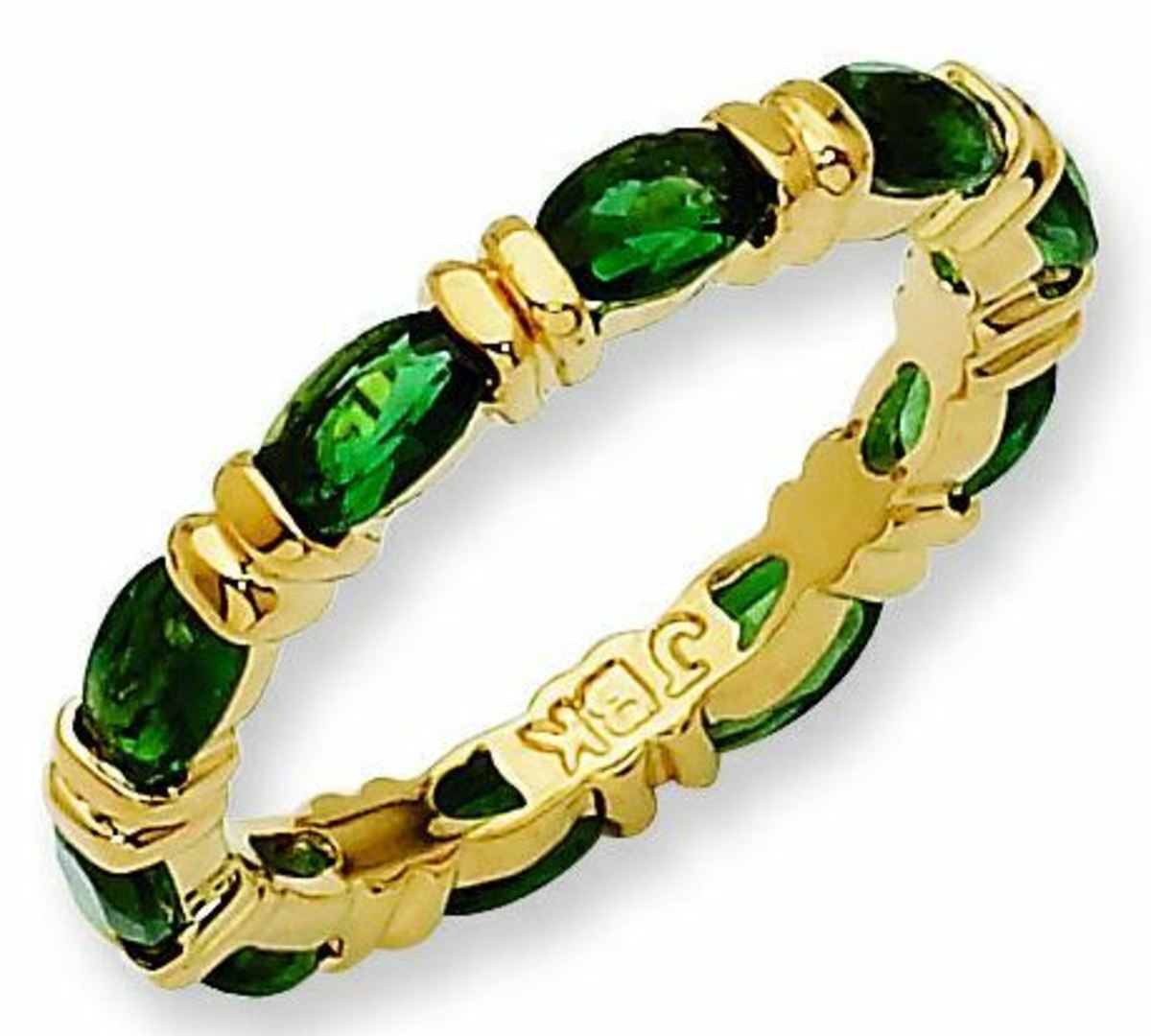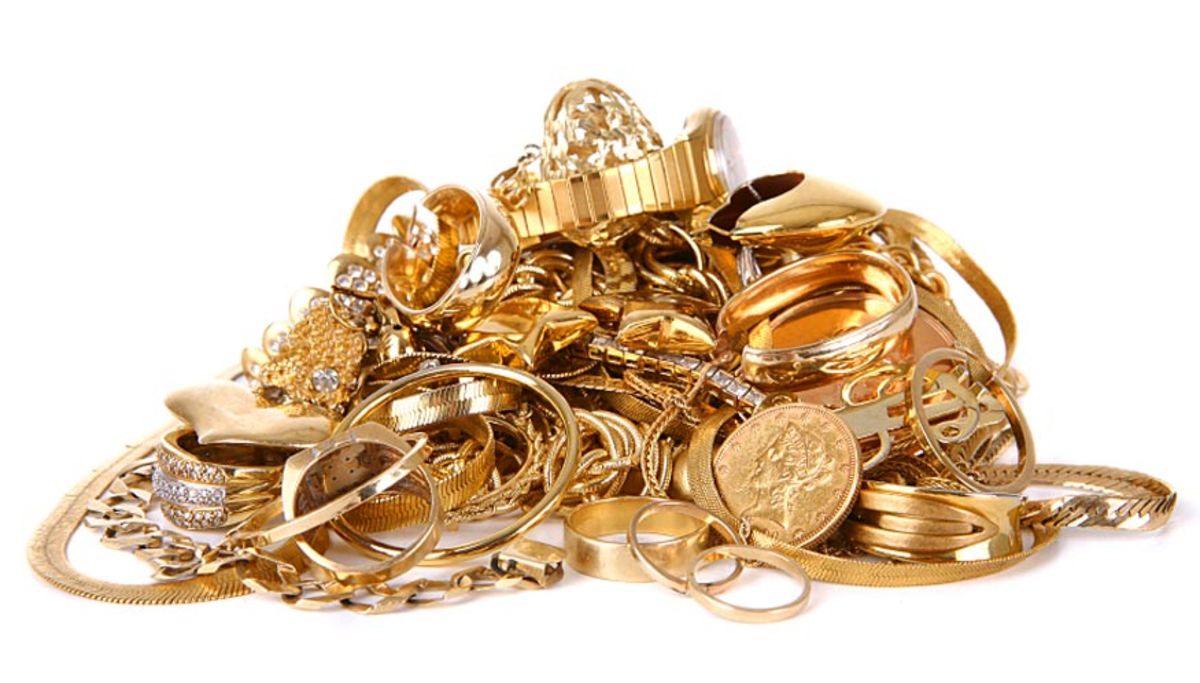Black Tahitian Pearls - how to value and love these beautiful organic gems
Tahitian pearls are lustrous, gorgeous, unusual seawater pearls. The glimmer with dark, shining shades of darkness, grey, green and silver, with overtones ranging from silver via pale and dark green to red and pink. They really are organic gems, highly-prized, and beautiful.
This article tells you about the factors which affect the price and value of Tahitian pearls, the different shapes, colours and sizes which occur naturally, the official grading system for Tahitian pearls, and gives a warning about some of the tricks and scams employed by unscrupulous sellers who want to rip you off.
The article has many photographs, as Tahitian pearls are something which need to be seen, not just described. The colours, shapes and lustre need to be viewed and appreciated – hence the pictures.
Detail of two dark Tahitian pearls with peacock overtones
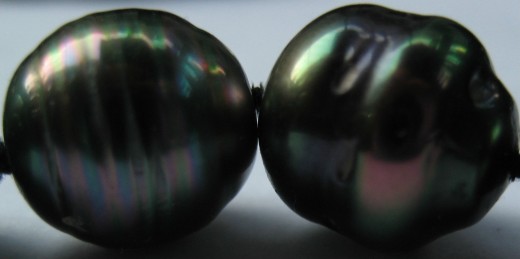
What are Tahitian Pearls?
Often called “Tahitian black pearls” or just “black pearls”, they are the only mainstream pearls available which are naturally dark in colour – albeit not actually black, but instead a rainbow of green, grey, silver, red and nearly-black.
Tahitian pearls found naturally have been highly-prized for centuries; from the 1970s onwards, there has been a developing industry which has produced cultivated Tahitian pearls.
None of the pearl farms are actually on Tahiti – most are elsewhere in French Polynesia. The quality and export of Tahitian pearls is controlled by the Tahitian government, however.
A few of the same variety of pearls are cultivated in other places, such as the Cook Islands, but otherwise, it's a Polynesian affair.
Like Akoya and South Sea pearls, Tahitian black pearls are produced by seawater mussels, and, like the other seawater cultivated pearls, are more lustrous and more expensive, on the whole, than freshwater pearls.
Modern cultivated Tahitian pearls are formed when a bead, usually made of mother-of-pearl, is implanted into the shell of the animal. The shell is then returned to the sea for a period of years, in the location of the pearl farm.
Finally, the shell is harvested, and if the pearl is a good one, a further bead is often added to the oyster, and it's put back into the sea to have another bash at growing an organic gem.
Single round Tahitian pearl set in silver pendant
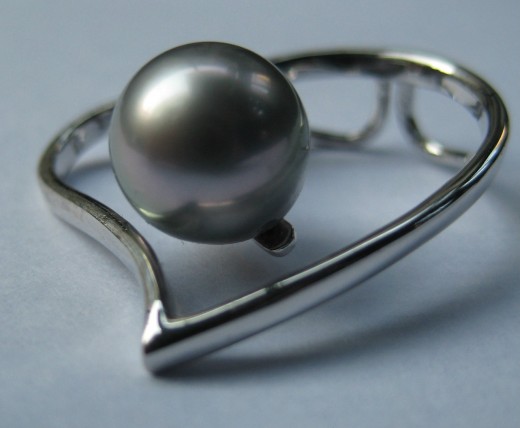
Factors which affect the price and value of Tahitian pearls
The price of Tahitian pearls varies according to the normal 4 pearl value factors, and more so than for most pearls, colour also has an impact on value. The most valuable Tahitian pearl is a round, perfectly smooth, large pearl, with glimmering lustre and a stunning colour. The factors affecting the value of Tahitian pearls are as follows:
-
size;
-
shape;
-
lustre;
-
surface;
-
colour.
Baroque Tahitian pearl with circles
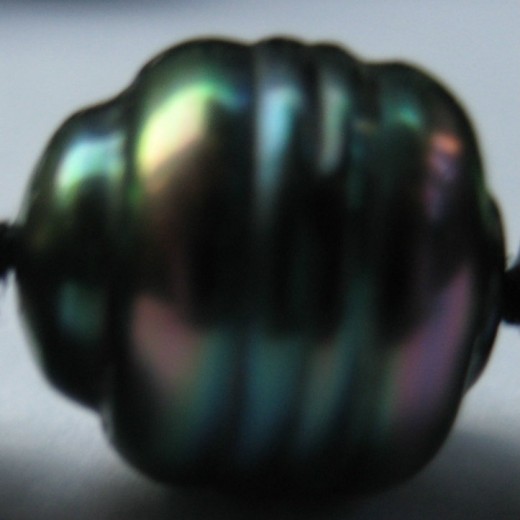
Tahitian pearl sizes
Tahitian pearls tend to be larger than Akoya pearls, and the largest are smaller than South Sea pearls, which reach quite impressive sizes of 25mm or so, on occasion.
The smallest cultivated Tahitian pearls tend to be about 7mm in size, and the largest up to about 18mm in total.
Some baroque pearls can be a bit larger than this along the longest edge, but not many. Most Tahitian pearls are likely to be between 7.5mm and 12mm.
The value of a pearl goes up significantly as it gets larger – if two pearls are equal in lustre and shape, but one is larger, the larger will be significantly more expensive.
Round 9mm dark Tahitian pearl
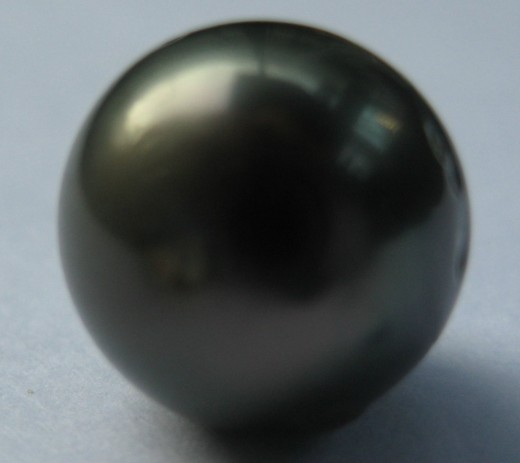
Tahitian pearl shapes
Round pearls are more valuable than other shapes. The classic shapes for nucleated Tahitian pearls are round, drop, and baroque.
Round pearls have minimum standards set by the Tahitian government.
Drop pearls are those which are literally like a drop of water, and can be very elegant and lovely.
Baroque pearls are those which are not symmetrical, and they can be all sorts of different shapes.
There are photographs in this article which show some examples of baroque Tahitian pearls, and a variety of shapes therein.
Not a shape, precisely, but as a variety of shape, are circled pearls. Any pearls, whatever shape, when forming in the oyster, and when the layers of nacre are being laid down, can form a circular band, raised above the rest of the pearl, and quite often a different colour.
A pearl can have one circle, or band, or can be heavily circled and have many of them.
A pearl can also have a spur of nacre, laid down randomly. This is also illustrated in this article, as it's easier to view than it is to describe.
Baroque Tahitian Pearl Necklace
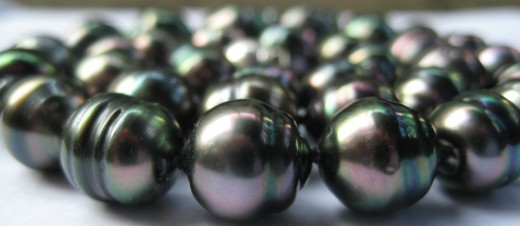
Lustre (also luster)
Lustre is hard to describe – it is better seen. It is the sheen, the glow, the shining glimmer that pearls have – or should have.
Otherwise perfect pearls, round and flawless, are less valuable if they are dull and matt in colour.
Seawater pearls have, on average, better and higher-quality lustre than freshwater pearls.
That isn't always true of every single pearl, of course – there are some metallic-lustrous freshwater pearls, and some Tahitian pearls which are quite dull and boring.
But on the whole, Tahitian pearls have a wonderful lustre.
Surface quality
Even high-quality, very expensive Tahitian pearls can have some flaws. It is very rare to get a completely-smooth Tahitian pearl with no bumps or dips in it.
In the grading section below, the degree of flaws permitted in the official grading system is set out.
A flawless Tahitian pearl is likely to be a very expensive one. But the flaws in many pearls are interesting, beautiful, and show them to be the organic gems that they are.
Bracelet of silver drop-shapedTahitian pearls
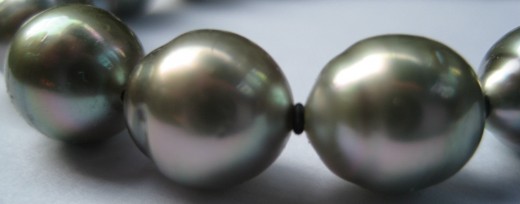
Peacock Tahitian Pearls strung on silk
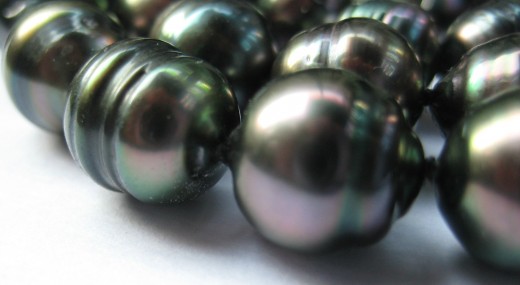
Tahitian Pearl Colours
Tahitians pearls are often referred to as “Black Tahitian pearls”, or “Tahitian black pearls”. Very few of them are actually black, however.
Some are a very dark, shiny grey, or almost black. The most common colours are a mid-grey, and a mid to dark green. Silver is also a common colour, a mid-dark silver, with a few light silver pearls.
There are also some Tahitian pearls which are a light silver-green or pale green, often called “Pistachio” when it applies to Tahitian pearls, and some which are a bronze or burgandy colour, in the body.
Overtones are a very important feature of Tahitian pearls. So a good Tahitian pearl is often dark green or dark grey, with overtones of green, red, pink or silver.
Dark pearls which have overtones of both mid to dark red and green are often described as “peacock” pearls.
It's also possible to have dark pearls with silver, red, bronze or green overtones of just one colour, and silvery or pale green pearls with pink, pale red or pale green overtones. The differences are wonderful and beautiful.
The most popular and best-known Tahitian pearls tend to be the peacock ones, with a dark body and red and green overtones. But there is a wonderful world of colour beyond just those.
There are also “chocolate” coloured Tahitians available. They don't seem very popular in Europe or in the UK, but are quite liked in the USA. These are the only Tahitian pearls generally on sale which are dyed – there are very few chocolate-coloured pearls occurring in nature. It seems, to me, a bit of a waste of all the glorious natural colours set out above, but each to her own.
Bracelet of dark Tahitian pearls
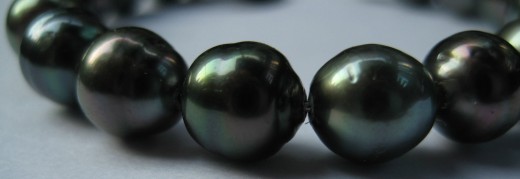
Tahitian Pearl Official Grading System
Tahitian pearls have minimum standards set before export is permitted. All pearls have to be submitted for certification, and are officially graded as A, B, C or D. Any pearl which doesn't have a minimum nacre covering of 0.8mm over the bead, for example, will not be certified, and will instead be destroyed.
Some pearls which would otherwise fail certification do, of course, get exported illegally, often to China, but any official pearl has that minimum nacre level.
As a result, there are very few Tahitian pearls that suffer from some of the problems cheap Akoya pearls can suffer from, with very thin nacre that wears away or peels off.
A necklace of baroque peacock Tahitian pearls
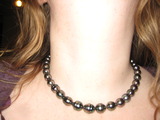
The Price of Tahitian Pearls - and Scams to Watch For
There are many unscrupulous sellers, particularly on the internet, who will offer you “Tahitian pearls” or “Tahitian black pearls” at what appears to be a great price.
A decent necklace of Tahitian baroque or drop pearls is likely to set you back at least £500 to £2,000 ($750 to $3,000), and £3,000 to £5,000 ($4,500 to $7,500) for a nice set of round pearls. My own 18-inch necklace of peacock Tahitian baroque pearls, shown in some of the photographs in this article, are 8mm to 10mm pearls, and are not perfect – some are heavily circled, some are flawed and marked. They are smooth and have high lustre. This strand cost £850. Pearls in this price range are not going to be the top pearls – for the very best, round, large, A grade, colourful and lustrous pearls, the sky's almost the limit. It's not hard to pay £50,000 ($70,000) for a wonderful set of top Tahitian pearls.
If you are paying a lot less than these prices, they probably aren't Tahitian pearls. There are many, many people selling middle-grade, dyed freshwater pearls and saying they are Tahitian – they won't have the colour, weight or lustre, and while the price asked would be very cheap for Tahitians, it is too high for the dyed freshwater pearls you will actually receive. It's important to go for an honest seller who can be trusted to sell what they actually say they are selling.


